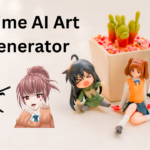What is the most preferred and best animate software for games to create game development? Video game design is a tremendous area where the right animation software is very necessary. We share with you 15 animation software tools that we consider to be among the best that can be used to create high-quality animations for video games.
Why Choose the Best Animate Software for Games?
There are many reasons to choose the best animation software for games and other purposes, whether you are in the field of animations and want to use it for gaming purposes, but there are many reasons to choose this.
- Having the best tools, artists can make things faster and easier.
- Great software has many instruments for making games and other things.
- Creative product features like impeccable sound, light, and clouds.
- Cheaper software can save money due to fewer incidents of ordinary or petty charges.
- Watching the trend and consumer behavior and adopting new technologies are the new themes of almost all software development Producers.
1. Autodesk Maya
Autodesk Maya is the deployed powerhouse software for 3D animation in the gaming sector. It has built an extensive set of functionalities for modeling, animation, and rendering. It remains an in-demand goal for many game developers to come up with professional-quality tried and true animations.
Features
- Advanced 3D modeling capabilities
- Robust character animation tools
- High-quality rendering engine
- Extensive plugin support
2. Blender
Blender is a grant-free open-source 3D creation suite. It is capable of all 3D provisions namely modeling, rigging, animation, and rendering. Thanks to its simple user interface and new updates, it is a popular choice of enthusiastic indie game developers.
Features
- Comprehensive 3D modeling tools
- Advanced rigging and animation systems
- Integrated game engine
- Large community and extensive learning resources
3. Unity
Unity is best outlined as the game engine and also promises huge success with its animation tools. It can also do the work of an animator for the game, making it a good tool. Unity’s Animation System makes it possible for both simple and complex animations to be produced right within the engine.
Features
- Integrated Animation System
- Timeline for creating cinematic content
- Animator Controller for managing complex animations
- Seamless integration with other Unity tools
4. Unreal Engine
Unreal Engine is another game engine with similar attributes to Unity but with even more capabilities on the animation side. This includes the ability to immediately view animations at the highest quality of showing the animation of the real environment. The engine’s Blueprint visual scripting system ensures that even those without coding skills can use it easily.
Features
- Advanced real-time animation tools
- Blueprint visual scripting for animations
- Robust physics simulation
- High-quality rendering capabilities
5. Adobe Animate
Adobe Animate, an evolution of Flash, in one set budget, is the most competitive 2D game animation. It provides a variety of facilities for presenting vector and dynamic content. The fact that it is able to work with the Adobe application family in a variety of ways makes it a valuable tool for game animators.
Features
- Vector brush for smooth animations
- Frame-by-frame animation capabilities
- Integration with other Adobe Creative Cloud apps
- Publish animations for various platforms
6. Spine
Spine is a 2D animation software that is mainly created for use in games. Its functionality has been anchored in skeletal animation that allows for the fast creation of complex movement sequences of characters. Workflow is game-specific so the software is not widely used by 2D animators even though it is the top choice among some who are into animating 2D games.
Features
- Powerful skeletal animation system
- Efficient workflow for game animations
- Runtime for various game engines
- Mesh deformation and weight painting
7. Toon Boom Harmony
Toon Boom Harmony is one of the best 2d animation programs. Many people use this tool in the field of animation. It is also excellent in making 2D graphics for games. It has many different tools and features that users can use to create a professional and detailed animation.
Features
- Advanced drawing and animation tools
- Powerful rigging system
- Compositing and effects capabilities
- Integration with various pipelines
8. 3ds Max
Ultra power 3D modeling and animation software Autodesk 3ds Max make the second software. On the other hand, it boasts different tools for modeling 3D that other software may have left out. 3ds Max also has particle systems and physics simulations that make it a very useful application for creating gaming visual effects.
Features
- Comprehensive 3D modeling tools
- Advanced character animation capabilities
- Powerful particle systems and physics simulations
- Extensive plugin ecosystem
9. Cinema 4D
Cinema 4D holds a reputation for being highly user-friendly with a broad set of 3D animation tools. One of the discussed tools is Character Animation, Nonetheless, it provides an excellent toolset for modeling, animating, and texturing 3D objects. So, the MoGraph tool is really great for game designers and can be used to create graphics for games.
Features
- Intuitive interface for 3D animation
- Powerful MoGraph toolset
- Physical rendering engine
- Team Render for network rendering
10. Houdini
Houdini is a 3D-based software that focuses on a node-based organic workflow. Mainly, it is used for high-end visual effects and simulations. It is said to be one of the more steep learning curves, yet the capabilities of Houdini make it one of the favorite choices for high-end game productions.
Features
- Node-based procedural workflow
- Advanced dynamics and simulation tools
- Powerful terrain and environment generation
- Game development toolkit
11. Modo
Modo is a 3D modeling and animation software that offers a unique workflow. It is famous for its simple and powerful modeling tools and its rendering ability. Although it is less popular among game developers, it still is a great software for making 2D game assets and animations.
Features:
- Flexible and intuitive 3D modeling tools
- Advanced UV unwrapping capabilities
- Built-in renderer with PBR support
- Animation and rigging tools
12. MotionBuilder
MotionBuilder in the Autodesk software suite is the most specific software of them all. The main aim of this software is to come up with realistic character movements for games. It is a real-time tool that is very useful in the process of the game animation pipeline.
Features
- Real-time character animation
- Advanced motion capture tools
- Efficient keyframe animation workflow
- Integration with other Autodesk products
13. Cascadeur
Cascadeur is a new type of program that is specifically designed for physics-based character animation. It is using some advanced methods or math algorithms to produce not rigid but moves based on physics principles. Hence, one possible application of this is the creation of realistic character movements in games.
Features
- Physics-based animation tools
- Pose-to-pose animation workflow
- Advanced trajectory editing
- Motion capture data cleaning
14. DragonBones
DragonBones is a free and open-source 2D animation tool that is perfect for game developers. It has in capacity to produce skeletons from the physics-based system at the inputs. It has to be integrated into the game engine making it a good choice for indies.
Features
- Skeletal animation system
- Mesh deformation tools
- Support for multiple game engines
- Free and open-source
15. Synfig Studio
Synfig Studio is a program. It is a program used for making 2D animation movies and is available to anyone. It is not just a game, but you can use it to make animations for games. It works with vector graphics so that the pictures you draw will not become different when you make them bigger. It comes with some advantages of the bone system, which makes it the best choice for both the animator and the computer scientist. Therefore, this is great software for persons who would love to produce 2D animations for games.
Features
- Vector graphics-based animation
- Bone system for character animation
- Layer-based compositing
- Extensive documentation and tutorials
Conclusion
Finally, the selection of the best animate software for games development on different factors as specific expectations of the project, type of game, and animators’ level of experience. With designing software like Autodesk Maya and extra facilities for free like Blender, a broad span of software is available for individuals, depending on their needs and budgets. If game developers are to grasp the benefits and added value of these tools, they can create attention-grabbing video game animations and thereby enhance the overall gaming experience.



